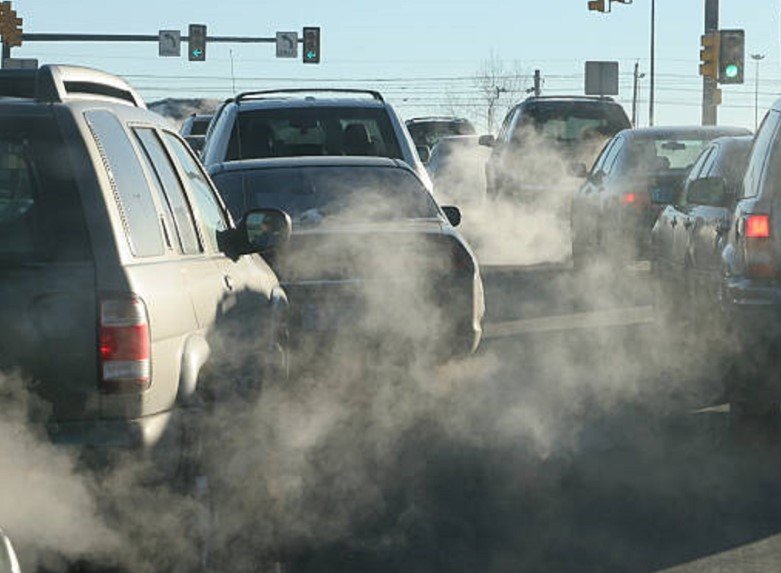The long-anticipated fuel ban on aging vehicles in Delhi has been pushed back. The Commission for Air Quality Management (CAQM) announced that the rule will now come into force from November 1, giving vehicle owners a few extra months to prepare—or scramble.
The delay affects the fueling of so-called End-of-Life (EOL) vehicles, which include diesel vehicles older than 10 years and petrol ones older than 15 years. These cars, trucks, and vans were originally set to be denied fuel across Delhi starting July 1.
A Pause That Speaks Volumes
This isn’t just a bureaucratic shuffle—it’s a pause that’s packed with implications. The CAQM’s decision came just a day after Delhi’s Environment Minister Manjinder Singh Sirsa urged a deferral, citing concerns raised by both the public and political stakeholders.
The updated directive now lets fuel stations in Delhi dispense fuel to EOL vehicles until Halloween night, October 31. Then, starting November 1, the pumps go dry for overaged cars across the national capital and five key NCR districts.
The Commission didn’t mince words either. In its official notice, it stated that “direction 89″—the one that enforces the ban—will be amended to reflect the new date.

What’s Being Banned, Where, and When?
This isn’t a blanket, all-at-once kind of ban. The rollout is staggered.
According to CAQM’s current roadmap:
-
From November 1, 2025, the fueling ban kicks in across:
-
Delhi
-
Gurugram
-
Faridabad
-
Ghaziabad
-
Gautam Budh Nagar
-
Sonipat
-
-
From April 1, 2026, the rest of the National Capital Region (NCR) will come under the same rule.
Here’s a breakdown of the new fuel ban timeline:
| Region | New Fuel Ban Start Date |
|---|---|
| Delhi + 5 NCR cities | November 1, 2025 |
| Remaining NCR areas | April 1, 2026 |
The commission says the staggered approach is necessary to avoid logistical chaos and allow the enforcement ecosystem to adapt.
Delhi’s Pollution Dilemma and Political Pushback
Delhi’s struggle with toxic air is no secret. EOL vehicles have long been flagged as major contributors to the capital’s pollution problem—especially during the smog-heavy winter months.
But the pushback has been building too. Many middle-class households still rely on old cars, especially for family mobility or small businesses. Taking fuel away from these vehicles feels, to some, like the government pulling the rug out from under them.
Delhi’s environment minister made it clear that the policy wasn’t being tossed out, just delayed. “We support clean air,” Sirsa said in a press briefing, “but policy must also balance practical hardship. We need to be fair.”
That pressure clearly worked.
E-Commerce Delivery Fleets, Taxi Owners, and Everyone In Between
The delay has brought a sigh of relief for hundreds of small taxi operators, delivery agents, and commercial drivers. For many of them, these older vehicles are the backbone of their livelihoods.
“Replacing a diesel van that’s 12 years old isn’t easy,” said Rakesh Chauhan, a courier fleet manager in Noida. “We can’t just swipe a card and get a new one.”
Here’s where the policy hits hardest:
-
Commercial vehicles used in delivery and transport
-
CNG-converted older petrol vehicles without current fitness certifications
-
Low-income households with aging personal cars
A courier driver summed it up, “No fuel means no food on the table.”
What’s an End-of-Life Vehicle Anyway?
Let’s clear the air on what counts as “End-of-Life” in policy terms:
-
Diesel vehicles: Banned after 10 years
-
Petrol vehicles: Banned after 15 years
This has been in place legally since the National Green Tribunal’s 2015 order. But actual enforcement—especially the denial of fuel—has been slow to materialize.
The November enforcement step is seen as the most aggressive to date.
A Messy Ban or Necessary Push?
Critics say banning fuel access is a poor enforcement method. What if a vehicle is fully compliant with emissions norms but simply older by age?
Supporters argue it’s the only way to force compliance.
One environmentalist said, “You can’t track emissions on every street, but you can stop them at the fuel pump.”
Still, others worry the ban could open the door to corruption, with pump owners accepting bribes to keep older vehicles fueled quietly.
And what about tourists driving into Delhi with older vehicles? CAQM’s original order said the rule applies “irrespective of the state in which the vehicle is registered.”
That means a 14-year-old petrol car from Chandigarh or Jaipur would be refused fuel in Delhi. Yep—outsiders aren’t exempt.
Enforcement and the Big Question: Will It Work?
The big unknown? Enforcement.
Fuel stations will be tasked with identifying which vehicles qualify as EOL, likely using digitized vehicle registration records.
But with over 1,000 fuel outlets across NCR and thousands of vehicles rolling in every hour, enforcement will be messy—at best.
A senior CAQM official, speaking anonymously, admitted, “We’re still working out exactly how fuel attendants will identify overaged vehicles in real time.”
Expect more updates on that.
